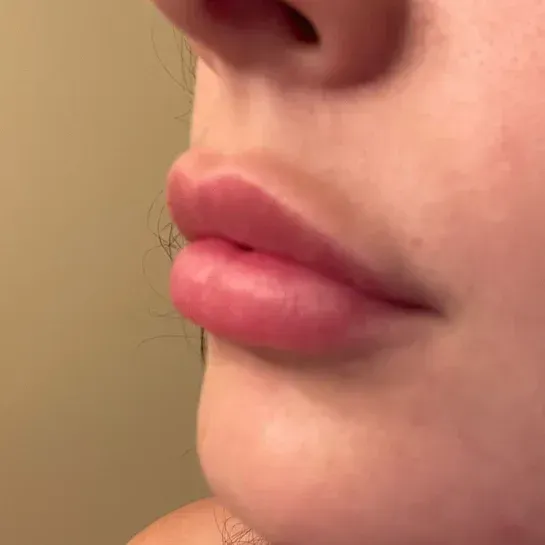Aftercare.
Morpheus 8.
Apply an antiseptic product (e.g., Clinisept) immediately after treatment and continue for 1-3 days, or until the needle holes have closed.
To reduce discomfort or heat, cool the skin after treatment using a clean cooling method.
On the first night, clean your face with tepid water and clean hands.
Avoid using makeup for 1-3 days after treatment.
Use new or clean applicators. Avoid touching the treated area. If necessary, clean your hands first.
After 3 days, you can resume using your regular products. However, avoid exfoliating and using retinol-based products until any scabs have healed.
Apply an SPF moisturiser (with a factor of 30+) daily. Continue this for at least four weeks after treatment, ideally ongoing for the best results.
Avoid significant sun exposure or sunbeds for approximately four weeks after treatment.
If your skin becomes itchy during healing, moisturise it and avoid picking at scabs.
WHAT TO EXPECT
Expect erythema (redness) for 1-3 days.
There may be oedema (localized swelling) for up to 1 week.
Tiny scabs may appear and last for a few days.
Bruising is possible. The downtime ranges from 1-2 days to 1 week, depending on the treatment parameters, your skin type, and response to treatment or side effects.
Your skin may become dry and itchy, and breakouts are
possible.
WHEN TO SEEK URGENT REVIEW
The only potential side effect that requires an urgent review by your clinician is infection. While extremely uncommon, if you notice a painful or itchy bump or swelling near an injection site, please contact the office immediately for a review.
0208 004 2500
Services
Lorem ipsum dolor sit amet, consectetuer adipiscing elit. Aenean commodo ligula eget dolor.
Botox
Treat wrinkles, gummy smile, masseter reduction, smokers lines, lip flip
Natural Lip Enhancement
Lorem ipsum dolor sit amet, consectetuer adipiscing elit. Aenean commodo ligula eget dolor. Aenean massa.
Dermal Filler
Lorem ipsum dolor sit amet, consectetuer adipiscing elit. Aenean commodo ligula eget dolor. Aenean massa.
Skin Rejuvenation
Lorem ipsum dolor sit amet, consectetuer adipiscing elit. Aenean commodo ligula eget dolor. Aenean massa.
FAQ

Lip Filler Migration
Understanding Lip Filler Migration: Causes and Prevention in 2024
Lip fillers are hugely popular for adding volume and creating a youthful look. But let's cut to the chase: some practices almost guarantee lip filler migration, where the filler moves away from the intended area, resulting in an uneven or unnatural appearance. Here's the no-nonsense truth about what causes lip filler migration and how to prevent it.
What is Lip Filler Migration?
Lip filler migration happens when the filler shifts beyond the targeted area, often settling above the upper lip. This results in an unbalanced look and can occur immediately or over time.
Causes of Lip Filler Migration
1. Injection Technique
Poor injection technique is a major cause of migration. Placing the filler too superficially or in the wrong tissue plane can cause it to move. Even the best injector will struggle if using flawed techniques.
2. The Russian Technique
The Russian technique, aiming for a heart-shaped pout by injecting filler vertically, is a migration risk. It uses multiple entry points and higher filler volume in a small area. This increased pressure often pushes the filler beyond intended borders.
3. Injecting Along the Border for Definition
Injecting filler along the vermillion border (where the lips meet the skin) is another migration risk. The border isn't a closed compartment; it's dynamic and constantly moving. Fillers here can easily migrate, especially with natural lip movements like talking and eating.
4. Type of Filler Used
Not all fillers are the same. Fillers that are too fluid or lack cohesiveness are prone to migration. Use high-quality, cohesive hyaluronic acid-based fillers specifically designed for lips.
5. Volume of Filler
Overfilling the lips is a guaranteed way to cause migration. Dermal fillers are hydrophilic, meaning they attract and draw in water over time. This can cause the filler to expand and disperse. Excessive filler creates pressure, pushing it into unintended areas. Moderation is key. Start with less and add more during follow-up appointments if needed. A conservative approach yields more natural and stable results.
6. Anatomical Factors
The lips are dynamic and connected to surrounding facial tissues, not a closed compartment. Imagine a loosely tied balloon—air easily moves within and escapes under pressure. Fillers can migrate within the lips if not properly contained.
7. Post-Treatment Behavior
Post-treatment care is crucial. Activities that put pressure on the lips, like massaging, touching, or strenuous exercise, can cause filler to move. Follow aftercare instructions carefully.
8. Quality of Filler
Cheap fillers are a disaster waiting to happen. High-quality fillers integrate well with tissues, reducing migration risk. Always choose reputable brands from certified providers.
9. Patient’s Skin Elasticity and Health
Skin elasticity and overall health impact filler stability. Poor skin elasticity from aging or genetics can lead to migration. Health conditions affecting skin quality or healing can also increase risks.
Preventing Lip Filler Migration
To prevent lip filler migration, stick to these straightforward strategies:
Avoid Overfilling: Less is more. Start with a conservative amount and add more if needed later.
Avoid Risky Techniques: Skip the Russian lip technique and vermillion border injections—they’re known for causing migration.
Choose High-Quality Fillers: Use reputable, high-quality fillers designed for lips.
Follow Post-Procedure Instructions: Stick to aftercare guidelines and avoid putting pressure on your lips.
Select an Experienced Injector: Make sure your injector is skilled and understands facial anatomy.
Conclusion
Lip filler migration is preventable if you avoid overfilling, risky injection techniques, and cheap fillers. Stick to these no-nonsense tips, and you’ll achieve beautiful, lasting results. If you’re considering lip enhancement, consult a qualified professional to ensure the best outcome.
Follow Us
© Copyright 2026. Farleigh Medical. All rights reserved.
